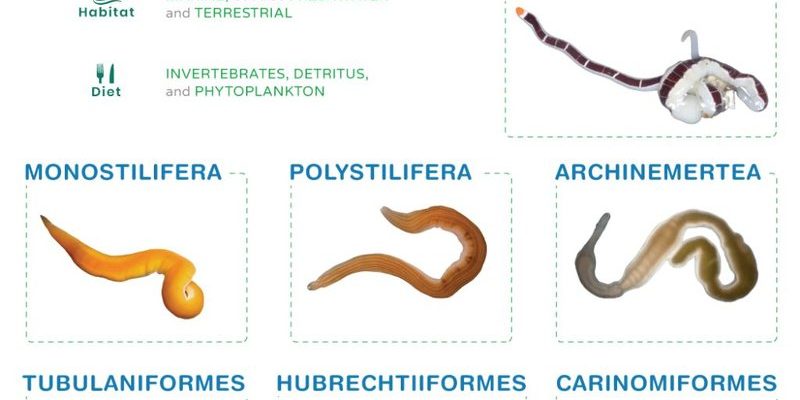
To put it simply, while most ribbon worms thrive in marine environments, you can indeed find some species in freshwater. Picture this: it’s like discovering that a fish can live both in the ocean and in a lake. Let’s dive a little deeper into this topic and explore where ribbon worms prefer to live, their unique characteristics, and why this matters for our understanding of ecosystems.
What Are Ribbon Worms?
**Ribbon worms** are soft-bodied animals with long, ribbon-like shapes, which can vary in size from just a few millimeters to several meters long. Their bodies are somewhat flat, and they usually have a vibrant coloration, making them quite a sight in the watery depths. Imagine a bright, squiggly noodle that’s just swimming through the water—it’s pretty unique!
These creatures belong to the phylum **Nemertea** and are known for their distinctive hunting method. Many ribbon worms have a specialized structure called a **proboscis**. This is like a long, sticky tongue that they use to grab their prey, which often includes small marine animals. Isn’t it interesting how nature provides such clever tools for survival?
Where Do Ribbon Worms Typically Live?
So, where do these squiggly critters prefer to hang out? Most ribbon worms are found in **marine environments**, from intertidal zones to the deep sea. They usually inhabit sandy, muddy, or rocky substrates, where they can easily blend in. Think about walking along the beach and noticing all those hidden creatures beneath the surface—that’s where ribbon worms thrive!
However, you might be surprised to learn that some species have adapted to live in freshwater environments. This is somewhat rare, but it does exist. In fact, it’s like finding a unicorn in a field of horses! Freshwater ribbon worms can be found in lakes, ponds, and rivers, where they continue to play an essential role in the ecosystem.
Freshwater Ribbon Worms: A Closer Look
Freshwater ribbon worms are not as well-known as their marine counterparts, but they are just as fascinating. One of the most notable species found in freshwater is **Drepanophorus**. This particular ribbon worm can usually be spotted in slow-moving or stagnant water, often in muddy bottoms.
What makes these freshwater species so interesting? For starters, they help maintain the balance of their ecosystems. By feeding on smaller invertebrates and organic matter, they contribute to nutrient cycling. Without them, the delicate balance of freshwater habitats could be disrupted. It’s like having a hardworking team member in a relay race—if one person doesn’t run their leg, the whole team could fall behind!
Key Differences Between Marine and Freshwater Ribbon Worms
While both marine and freshwater ribbon worms share some characteristics, there are a few differences worth noting:
- Habitat: Marine ribbon worms thrive in saltwater environments, while their freshwater cousins are found in lakes and rivers.
- Size: Freshwater ribbon worms are generally smaller than many marine species, which can grow quite large.
- Prey: While marine ribbon worms often eat small fish and crustaceans, freshwater species feed mainly on tiny invertebrates and detritus.
Understanding these differences helps us appreciate how diverse nature can be. Each ribbon worm has evolved to make the most of its environment, whether it’s a bustling ocean or a tranquil pond.
Why Do Ribbon Worms Matter?
You might be wondering why it’s important to learn about ribbon worms, especially the freshwater ones. Well, these worms are more than just weird-looking creatures. They play a crucial role in their ecosystems. By feeding on detritus and small invertebrates, they help break down organic matter, which contributes to nutrient cycling in freshwater systems.
Additionally, studying ribbon worms can provide insights into the health of an ecosystem. Changes in their populations can signal shifts in environmental conditions. For example, if a freshwater ribbon worm species begins to decline, it could indicate problems in water quality or habitat changes. It’s like having an early warning system about the health of our waters!
How Can You Observe Ribbon Worms in Their Natural Habitat?
If you’re curious about seeing these creatures in action, you’re in luck! Observing ribbon worms can be a fun activity. Here are a few tips on how to spot them:
1. **Find the Right Spot**: Look for freshwater locations like lakes, ponds, or marshes. Muddy or sandy bottoms are likely candidates for ribbon worms.
2. **Use a Net**: Gently scoop up some sediment and water with a fine mesh net. You might catch a glimpse of these elusive worms wriggling around.
3. **Be Patient**: Ribbon worms can be shy, so give them some time. They often burrow into the substrate, making patience key when trying to observe them.
By taking the time to search for them, you may discover a whole new world beneath the water’s surface. It’s a reminder of how interconnected our ecosystems are and how even the smallest creatures have important roles.
In summary, while ribbon worms are typically associated with saltwater environments, some species can indeed be found in freshwater. These unique creatures contribute significantly to their ecosystems, helping maintain balance and health in both marine and freshwater habitats.
The next time you’re near a lake or river, take a moment to appreciate the diverse life forms swimming just beneath the surface. Ribbon worms might not be the first creatures that come to mind, but they certainly play an essential role in the broader tapestry of life. Whether you’re studying them or just enjoying a leisurely day by the water, ribbons worms remind us of the beauty and complexity of nature.

